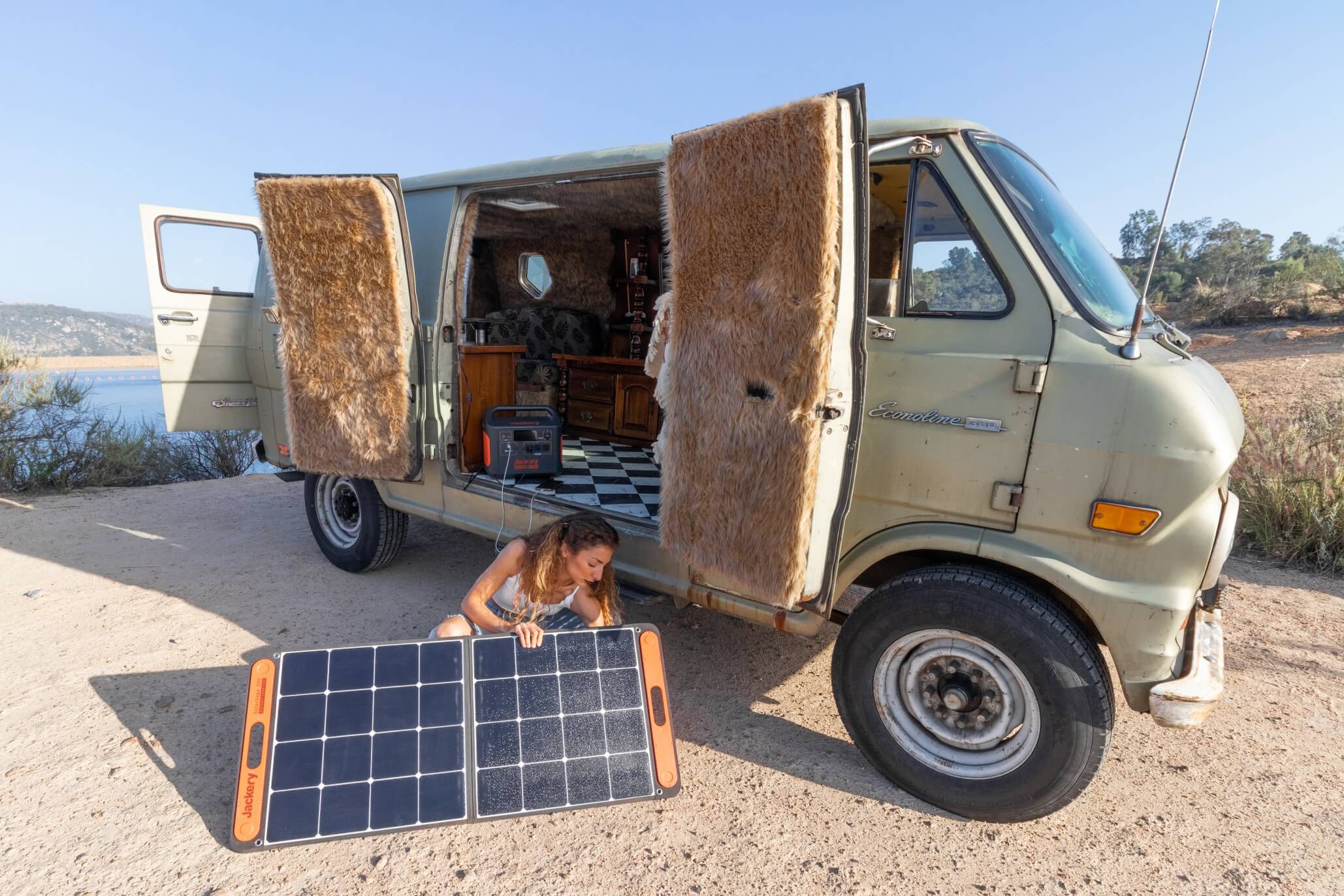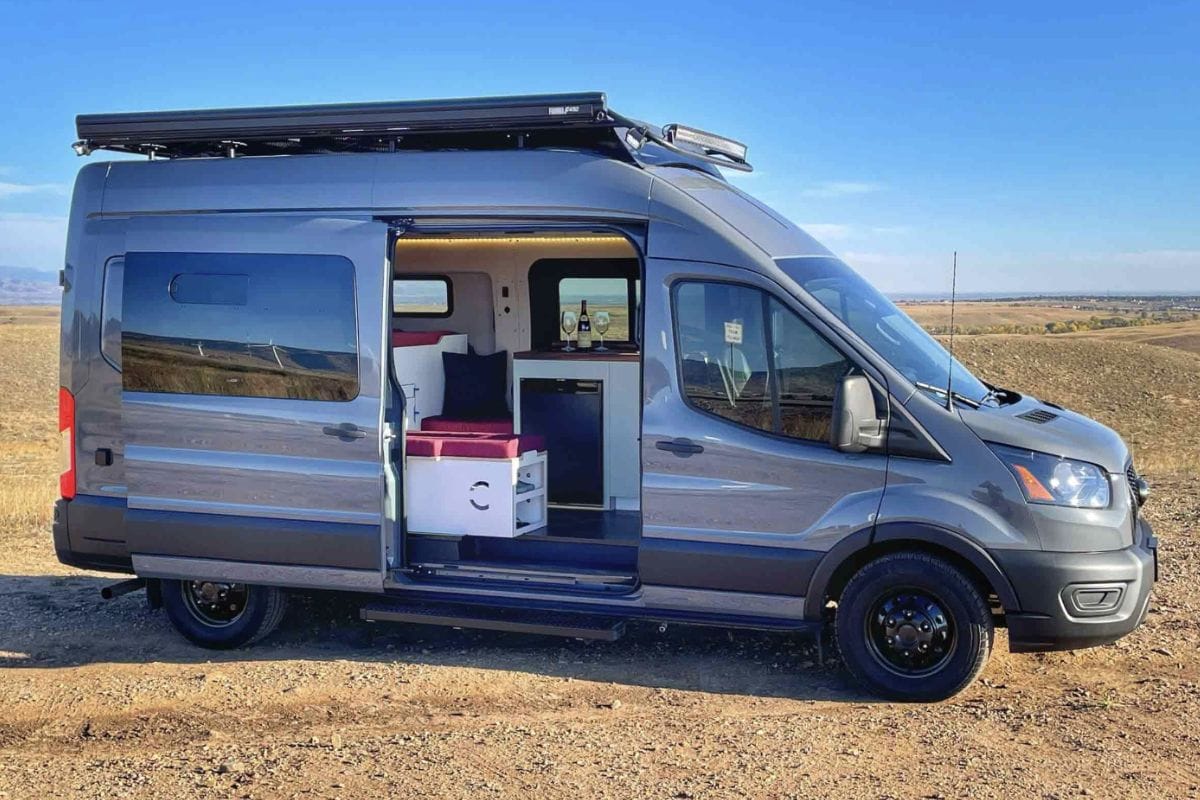To convert a Transit van into a camper, start by planning the layout and gathering necessary tools. Follow a step-by-step process to ensure a smooth conversion.
Turning a Transit van into a camper offers a flexible and affordable way to enjoy travel. Begin by designing a layout that maximizes space and functionality. Essential steps include insulating the van, installing electrical systems, and building furniture. Proper insulation keeps the van comfortable in various climates.
Electrical systems provide lighting, charging ports, and power for appliances. Building custom furniture, like a bed and storage units, ensures efficient use of space. With careful planning and execution, a Transit van can transform into a cozy, mobile home. This guide will help you understand each step in detail.
Choosing The Right Van
Converting a transit van into a camper is an exciting project. One of the first steps is choosing the right van. This decision will affect the entire conversion process. It determines the space, layout, and features you can include. Below, we will explore the different van models and factors to consider when buying.
Van Models Suitable For Conversion
Not all vans are created equal. Some models are more suitable for conversion than others. Here are a few popular choices:
- Ford Transit: Known for its reliability and spacious interior. It offers various roof heights.
- Mercedes-Benz Sprinter: Offers a smooth ride and multiple sizes. It is a favorite among van lifers.
- Ram ProMaster: Features a wide body and front-wheel drive. It is easy to maneuver and park.
- Nissan NV: Known for its durability and straightforward design. It offers good cargo space.
Factors To Consider When Buying
Before purchasing a van, consider these important factors:
- Budget: Determine how much you are willing to spend. Include costs for both the van and the conversion.
- Condition: Check the van’s mileage, engine condition, and maintenance history. Avoid vans with too many issues.
- Size: Decide on the size based on your needs. Larger vans offer more space but may be harder to drive.
- Fuel Efficiency: Consider the van’s fuel economy. It can save you money on long trips.
- Roof Height: High-roof vans allow for standing space. It makes the living area more comfortable.
- Availability of Parts: Choose a van with easily available parts. It simplifies maintenance and repairs.
Choosing the right van is crucial for a successful conversion. Make sure to consider all factors carefully. Happy van hunting!
Planning The Layout
Planning the layout is the first step to convert a transit van into a camper. This process determines how comfortable and functional your new home will be. By carefully planning, you can maximize space and include essential camper features.
Maximizing Space
To maximize space, use every inch of the van. Opt for multi-purpose furniture. For example, a bed that turns into a sofa. Use vertical space for storage. Install shelves and cabinets on the walls. Make sure to leave enough room to move around.
Consider a foldable table for dining and working. When not in use, it can be tucked away. Use under-bed storage for clothes and gear. Think about installing pull-out drawers under the van’s floor. This will provide extra storage without taking up living space.

Credit: ca.jackery.com
Essential Camper Features
A camper needs some essential features to be livable. These include a bed, kitchen, and bathroom facilities. Start with a comfortable bed. A good night’s sleep is crucial. You can use a foam mattress or an inflatable one.
For the kitchen, a small fridge and a portable stove are essential. Include a sink with a water pump. This will help you wash dishes and cook meals. A foldable countertop can provide extra space for cooking.
For the bathroom, a portable toilet and a solar shower can work. You can use a privacy tent for showering. Don’t forget storage for toiletries and towels. Proper ventilation is crucial to avoid moisture buildup.
| Feature | Importance |
|---|---|
| Comfortable Bed | High |
| Small Fridge | High |
| Portable Stove | High |
| Portable Toilet | Medium |
| Solar Shower | Medium |
| Storage Solutions | High |
Planning the layout well can make your camper van cozy and functional. Use these tips to create a space that feels like home.
Insulation And Ventilation
Transforming a transit van into a camper requires attention to insulation and ventilation. These elements ensure comfort and air quality inside your camper. Proper insulation keeps the van warm in winter and cool in summer. Ventilation prevents condensation and promotes fresh air circulation.
Types Of Insulation Materials
Choosing the right insulation material is crucial for your camper conversion. Here are some popular options:
- Spray Foam Insulation: Provides excellent coverage and air sealing. It is a bit costly but offers high R-value.
- Rigid Foam Board: Easy to cut and install. It is a good balance of cost and effectiveness.
- Reflective Insulation: Ideal for reflecting heat away. It is often used in combination with other materials.
- Fiberglass Insulation: Commonly used in homes, but requires careful handling. It is cost-effective and widely available.
- Sheep Wool Insulation: A natural and sustainable option. It provides excellent thermal and acoustic insulation.
| Material | Pros | Cons |
|---|---|---|
| Spray Foam | High R-value, air seal | Expensive, requires professional installation |
| Rigid Foam Board | Easy to install, good value | Can be bulky |
| Reflective Insulation | Reflects heat, lightweight | Less effective alone |
| Fiberglass | Cost-effective, widely available | Requires careful handling |
| Sheep Wool | Sustainable, excellent insulation | More expensive |
Installing Roof Vents And Fans
Installing roof vents and fans is essential for proper ventilation. It helps remove hot air and brings fresh air inside. Here’s how to do it:
- Choose the Right Spot: Select a flat area on the roof for installation. Avoid areas with wiring or structural elements.
- Cut the Opening: Mark the vent’s template on the roof. Use a jigsaw to cut the opening carefully.
- Install the Vent: Place the vent in the opening. Seal it with waterproof sealant. Screw it in place using the provided hardware.
- Install the Fan: If your vent includes a fan, connect the wiring to a power source. Ensure proper sealing around the fan to prevent leaks.
- Test the Ventilation System: Turn on the fan and check for proper airflow. Ensure there are no leaks or gaps.
Proper installation of roof vents and fans ensures continuous airflow. It helps maintain a comfortable environment inside your camper van.

Credit: m.youtube.com
Electrical System Setup
Setting up the electrical system in your camper van is crucial. It ensures you have power for lights, appliances, and devices. This section will cover essential components like solar power options and battery storage solutions.
Solar Power Options
Solar power is a popular choice for camper vans. It provides a sustainable energy source. There are several options to consider:
- Monocrystalline Panels: High efficiency and compact size.
- Polycrystalline Panels: Cost-effective but less efficient.
- Flexible Panels: Lightweight and easy to install on curved surfaces.
Choosing the right solar panels depends on your energy needs and budget. Here’s a quick comparison table:
| Type | Efficiency | Cost | Weight |
|---|---|---|---|
| Monocrystalline | High | High | Moderate |
| Polycrystalline | Medium | Low | Moderate |
| Flexible | Medium | High | Light |
Battery Storage Solutions
Battery storage is essential for storing the energy your solar panels generate. There are different types of batteries to consider:
- Lead-Acid Batteries: Affordable but heavy and require maintenance.
- AGM Batteries: Sealed, maintenance-free, and more durable than lead-acid.
- Lithium-Ion Batteries: Lightweight, long-lasting, and low maintenance.
Choosing the right battery depends on your needs and available space. Here’s a summary:
- Lead-Acid: Best for small budgets, needs regular checks.
- AGM: Good balance of cost and durability.
- Lithium-Ion: Best performance but highest cost.
Ensure to install a battery management system to monitor and protect your batteries.
Plumbing And Water Systems
Converting a transit van into a camper requires a reliable plumbing and water system. Proper installation ensures you have clean water for drinking, cooking, and cleaning. This guide will help you set up the essential components effectively.
Installing A Sink And Faucet
A sink and faucet are vital for your camper’s kitchen. Follow these steps to install them:
- Choose the right sink and faucet: Ensure they fit your van’s space.
- Cut the countertop: Use a jigsaw to cut the space for the sink.
- Install the sink: Place the sink in the hole and secure it with brackets.
- Attach the faucet: Insert the faucet into the sink hole and tighten the nuts.
- Connect the water lines: Attach hoses from the faucet to the water supply.
Water Storage And Filtration
Proper water storage and filtration are crucial for your camper. Here are the steps to set them up:
- Select a water tank: Choose a tank that fits your storage space.
- Install the water tank: Secure the tank in a stable position.
- Connect the water pump: Attach the pump to the tank for water flow.
- Install a water filter: Place the filter between the tank and the faucet.
- Test the system: Ensure there are no leaks and the water flows correctly.
Here is a simple table summarizing the key components:
| Component | Description |
|---|---|
| Sink | Used for washing dishes and hands |
| Faucet | Dispenses water from the tank |
| Water Tank | Stores clean water |
| Water Pump | Ensures water flows through the system |
| Water Filter | Removes impurities from the water |
Following these steps ensures your camper has a reliable plumbing system. Enjoy the convenience of having clean water on the road!
Building Furniture And Storage
Converting a transit van into a camper involves more than just adding a bed. Properly designed furniture and storage solutions are crucial. They maximize space and comfort. This section covers building furniture and storage. It ensures your camper is both practical and cozy.
DIY Bed Frames And Cabinets
Building your own bed frames and cabinets saves money. It also offers customization. Use lightweight materials like plywood. It reduces weight and is easy to work with. Create a sturdy frame using 2x4s. Secure the frame to the van floor. This prevents shifting while driving.
Construct cabinets above the bed. They provide additional storage space. Use cabinet locks to keep doors closed during travel. Install sliding drawers under the bed. They are perfect for storing clothes and gear. Add a foldable table attached to the bed frame. It can serve as a dining or work area.
Space-saving Storage Ideas
Optimize every inch of your van. Use multi-functional furniture. Consider a bench with storage underneath. It can double as seating and storage. Use overhead nets to store lightweight items. They are great for blankets and pillows.
Install wall-mounted shelves for easy access. Use hooks and bungee cords to secure items. They prevent things from moving around. Add magnetic strips for metal tools and kitchen utensils. Store foldable chairs and tables. They take up less space. A hanging shoe organizer can hold small items. Hang it on the back of the front seats.
| Storage Solution | Benefits |
|---|---|
| Overhead Cabinets | Maximizes vertical space |
| Under-bed Drawers | Efficient use of floor space |
| Wall-mounted Shelves | Easy access to essentials |
| Foldable Furniture | Saves space when not in use |
| Hanging Shoe Organizer | Stores small, frequently used items |
Interior Design And Comfort
Converting a transit van into a camper involves more than just functionality. The interior design and comfort play a crucial role in creating a home on wheels. This section will guide you through choosing the right materials and decorating tips for a cozy camper.
Choosing The Right Materials
Selecting the right materials is vital for durability and comfort. Here are some options to consider:
- Flooring: Use vinyl or laminate for easy cleaning and durability.
- Insulation: Install foam board or spray foam for better temperature control.
- Walls: Opt for lightweight plywood or composite panels for easy installation.
- Furniture: Choose foldable or multi-purpose furniture to save space.
These materials ensure a comfortable and long-lasting interior for your camper.
Decorating Tips For A Cozy Camper
Creating a cozy atmosphere makes the camper feel like home. Here are some decorating tips:
- Color Scheme: Use light colors to make the space look bigger.
- Lighting: Install LED lights for energy efficiency and warmth.
- Textiles: Add soft cushions, throws, and curtains for comfort.
- Personal Touches: Decorate with photos, plants, and artwork to add personality.
These tips will transform your van into a welcoming and cozy camper.

Credit: www.contravans.com
Safety And Legal Considerations
Converting a transit van into a camper is an exciting project. It’s crucial to prioritize safety and legal considerations. This ensures a smooth and lawful transformation. Below are key points to focus on to ensure your van meets all safety and legal standards.
Ensuring Proper Ventilation
Proper ventilation is essential in a camper van. It keeps the air fresh and prevents moisture buildup.
- Install roof vents or fans to allow airflow.
- Use window vents to ensure cross-ventilation.
- Consider a carbon monoxide detector for added safety.
A well-ventilated van reduces the risk of mold and bad odors. It also ensures a healthy living environment.
Compliance With Local Regulations
Each region has specific regulations for camper vans. Ensure your conversion complies with local laws.
| Regulation | Details |
|---|---|
| Vehicle Classification | Check if your van needs reclassification as a camper. |
| Insurance | Update your insurance policy to cover the camper van. |
| Safety Standards | Ensure the installation of safety equipment meets local standards. |
Research and adhere to these regulations to avoid legal issues. This will also ensure your camper van is safe for use.
Transforming a transit van into a camper can be rewarding. Follow this guide for a smooth conversion process. Enjoy the flexibility and freedom that van life offers. Start your adventure with confidence, knowing your camper is ready for the road.
Happy travels and safe journeys in your newly converted van!
FAQs:
What Tools Do I Need To Convert A Transit Van?
You’ll need basic tools like a drill, saw, and screwdrivers. Additionally, insulation materials, wood, and electrical supplies are essential.
How Much Does It Cost To Convert A Van?
Converting a van can cost between $5,000 and $15,000. Costs depend on materials and complexity.
How Long Does A Van Conversion Take?
A van conversion typically takes 2 to 4 months. Time varies based on skills and complexity.
Do I Need A Permit To Convert My Van?
Permits are usually not required for van conversions. However, check local regulations to ensure compliance.
